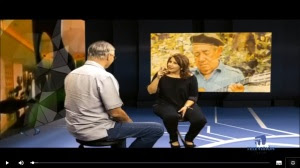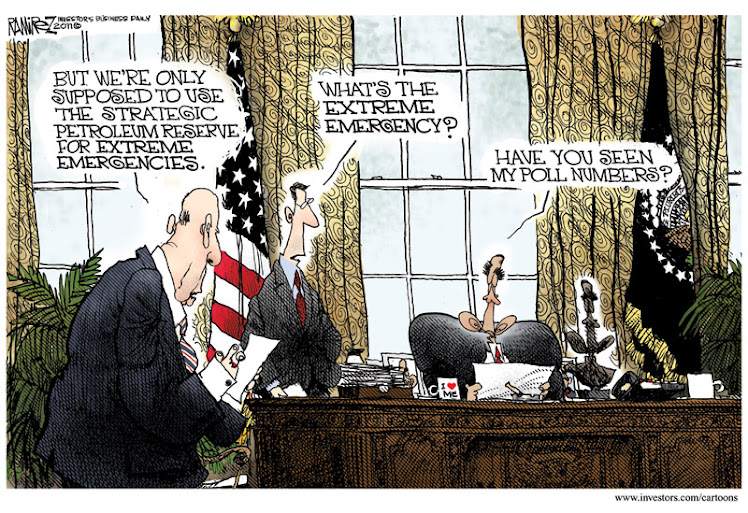On
December 10, 2015, in a message to Venezuelan President Nicolás Maduro,
Fidel expressed, among other ideas: “Cuban revolutionaries – a few
miles from the United States, which always dreamed of taking Cuba and
turning it into a hybrid of Casino and brothel, as a way of life for
José Martí’s children – will never renounce its full independence and
[demand] total respect for its dignity,” something necessary to remember
today, when, from the North, the intention is to “glorify” Fulgencio
Batista and the Cuban society of that time.
Relations
between the United States and Cuba have been conflictive since ancient
times, due to their old geopolitical ambitions. The Monroe doctrine,[1]
promulgated in the first third of the 19th century, advocated its right
over the countries of the continent. When Cuba became independent from
Spain, they were entitled to it, as long as it was located in its sphere
of influence. They seemed to be unaware that Cuban independence was
achieved by the sacrifice and blood of its children, who suffered the
complicit support of the Metropolis of that country, which only decided
to take sides when the Cuban forces had defeated the Spanish army.
The
U.S. military intervention that put an end to the war installed a
provisional government, which, after dissolving the Mambí Army and
holding elections in which the patriots were relegated [to the
sidelines] and divided, created a neo-colonial republic. New
interventions, and finally a constitutional amendment (Platt), which
granted Washington the right to intervene militarily when they
considered it [justified], opened a neo-colonial era in our homeland,
frustrating our national independence and sovereignty.
Before,
during the colonial period, U.S. economic interests had begun to
establish themselves in Cuba and after the republican process had begun,
financial groups from that country took over the Cuban economy, mainly
in sugar, agriculture, livestock and services. In those first days. they
invested approximately $1,500 million dollars. Sugar was their primary
objective, from which they derived important dividends, not only because
of the weight it had in their production, but also because they were
the ones who commercialized it and later had to pay tariffs to their
government for its export. In the 1920s, the government charged an
incredible 1,119’000,000 dollars for this concept.
Cuba
and its riches belonged to them. The Rockefeller group, one of the
pioneers in settling in the Island, possessed a score of sugar
factories, 40,000 caballerías of land [1,326,461 acres], the King Ranch
for cattle development, the exploitation of nickel in the north of the
Cuban east (Nicaro), Banks (like Chase Manhattan Bank and others) and
petroleum refineries (Standard Oíl of New Jersey, Texaco…) and other
businesses more.
The
thirties were about definitions. On the one hand, the need to thwart
the Revolution [of 1933), the result of the overthrow of Machado’s
dictatorship, and on the other, the urgency of establishing a
heavy-handed government that would provide stability for trade and
business, a role then assigned to Colonel Fulgencio Batista.
Those
years were the beginning of the penetration of the tentacles of the
Yankee mafia, first with the smuggling of alcohol and then with money
laundering. In the 1940s, U.S. capital invested in the island began to
emigrate from the agricultural sector to services, mining, industry and
tourism. The Constitution of 1940, which foresaw the possibility of an
Agrarian Reform, forced them to make this decision, in addition to the
reduction of the sugar quota assigned to Cuba in the North American
market, which decreased significantly from 50% to 28%.
During
the Second World War, in the United States, there had been a strategic
alliance between the State, finance capital, the security and
intelligence complex and the mafia. Its first result was to guarantee
the security of the North American ports from possible German sabotage
and then to facilitate the disembarkation of its troops in Sicily,
Italy. This “holy” alliance would be strengthened over the years. The
effects of this alliance would reach Cuba. One was the 1946 meeting of
all the chiefs of the North American mafia at the Hotel Nacional, where
the control and spheres of influence of the “families” on the island and
the legalization of their fortunes were decided.
Graham
Greene, the well-known British writer, after one of his visits to Cuba
wrote: “Havana is the city where all vice is allowed and all business is
possible. He delighted in talking about it at the Floridita, in its
brothels, the roulette in the hotels, the Shanghai theater where for a
dollar and twenty-five cents one could see a show of extreme obscenity.
When he got bored with this, he would go to look for a little bit of
cocaine, which was within everyone’s reach. The favorite brothel
(Marina2) was furnished with spotless linoleum tables and chairs
arranged around a small dance floor. The girls, all teenagers, were in
shorts and were white and many were blond, with Latin eyes.
In
Havana, U.S. Ambassador Arthur Gardner observed with growing disbelief
and publicly lamented that “The masses of people who come here are
inclined only to pleasure and think only in terms of fun, rum and
nightclubs.
Little
by little, the great North American economic interests took over the
nascent industries, export and import companies and leisure tourism.
Meanwhile, the smuggling of drugs, diamonds, sumptuous items, skilled
prostitution and money laundering grew disproportionately. To this end,
72 banks and financial institutions were opened, of which just to
mention one, the Gelats, received almost $1 million a day in 1949 to be
“laundered”.
The
economic project consisted of making Cuba the “Monte Carlo of the
Caribbean”. According to Batista’s “memoirs”, the Cuban government
invested one billion dollars, of which some was given for services
(electricity and telephones), others for airlines, others for
infrastructure, in short, all aimed at facilitating this enormous plan
to make this country a brothel. At that time, Havana alone had 270
brothels and 11,500 registered prostitutes, although some commentators
at the time considered a figure close to 100,000.
According
to prominent Cuban intellectual Graziellla Pogolotti, “the leisure
industry expanded throughout the country, the dives, meeting points
for organized prostitution and the business centers of the mafia
multiplied throughout the provincial capitals. In that scenario, the
government outlined a master plan for tourism development, called the
“National Planning Law,” through which it designed urban plans aimed at
developing infrastructure in Varadero, Trinidad, Isla de Pinos and East
Havana, and projected a new Presidential Palace between El Morro and La
Cabaña.
The
tourist function was enhanced with hotel development in front of the
Havana Malecón and was reinforced with the creation of an artificial
island (opposite the mouth of the Almendares River) to receive new
facilities for leisure, hotels, casinos and shopping centers. It was
proposed to extend the Jesús del Monte roadway through Muralla Street
and the extension of Habana Street, directly connected to the Havana
tunnel and eliminating the blocks between Lamparilla and Amargura, to
create a landscaped promenade from the Capitol to the Port”.
The
Financial and Atlantic banks owned by Julio Lobo and Amadeo Barleta,
one, a sugar businessman and the other head of one of Havana’s mafia
families, created two partnerships for this project: the Riviera company
in Havana and the Hotel company in Cuba. They were in charge of – with
the illegal money that constantly arrived from the United States –
investing it in legal operations, which at that time consisted in the
construction of 50 hotels in the capital and as many in the provincial
capitals of Pinar del Rio, Matanzas, Cienfuegos, Camagüey, Holguín and
Santiago de Cuba.
As
if that wasn’t enough, dirty money began to invade all sectors: the
department store La Filosofía, TV channels 2 and 12, the newspaper El
Mundo, Ámbar Motors, a company selling the latest model cars, import and
export companies in charge of introducing duty-free goods from the
United States into the Latin American market, etc, etc, etc.
Until
the early 1950s, the main drug consumed in the North was heroin, but
when Batista inaugurated “aerovías Q” that provided trips between
Havana, Camagüey and Barranquilla, cocaine began to flow from Colombia
to the United States, at the same time as it flooded Cuban markets.
At
the time of the revolutionary triumph, 23% of the population over the
age of 15 was illiterate, only 55% of the children between the ages of 6
and 14 were enrolled in school; one million inhabitants of the 6 who
had not passed any school grade, the population under the age of 15 had
less than a third grade, 600,000 children had no school and 100,000
teachers had no jobs.
A
single example shows the unjust distribution of arable land in the
country. In the Ciénaga de Zapata, of the 25,000 existing caballerías
laborables, only 273, or 1.15%, were in the hands of farmworkers.
In
the city of Havana, tall buildings, mansions, hotels, gambling casinos,
luxurious deals, flourished, while slums or favelas took over the
capital’s periphery. There, the poor, unemployed and peasants who came
by the thousands to try their fortune ended up, becoming cheap and
disposable labor. However, seen from an airplane, the roof of a
luxurious hotel or a tourist ship, the Cuban capital dazzled, hiding its
vices and rottenness.
Those,
in short, were the plans of the United States, its capitals and the
mafia, along with the lackey government of Fulgencio Batista. He had the
mission of maintaining order and tranquility in Cuba with blood and
fire, which would cost our people 20,000 victims. His role was to
facilitate the construction of the “Monte Carlo of the Caribbean,” the
dream of the “owners of Cuba.”
These
were the causes of the rebellion of our people, which was started on
July 26, 1953, in the attacks on the Moncada and Carlos Manuel de
Céspedes barracks. José Martí, in his speech known as Los Pinos Nuevos,
declared himself heir to those foundational events. Fidel, who led these
actions in the face of the prevailing corruption and injustice, said
during the Moncada trial that the Apostle was its intellectual author. A
few years later, in 1968, during the commemoration of the centenary of
our independence struggles, he stated that “then we would have been like
them and now they would be like us.
Notes
1 James Monroe, first secretary of state and then president of the United States.
2 Marina was a madam subordinate to Meyer Lansky’s mafia who owned a “chain” of “high-class” brothels in Havana.
2 Marina was a madam subordinate to Meyer Lansky’s mafia who owned a “chain” of “high-class” brothels in Havana.
La Pupila Insomne, August 9, 2019
Translated and edited by Walter Lippmann for CubaNews.
https://walterlippmann.com/
https://walterlippmann.com/
Video:
|
|













